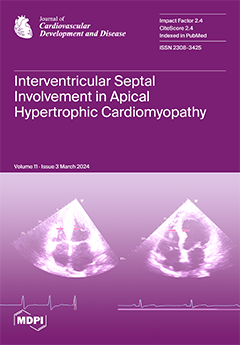Background: For (thoracic) endovascular aortic repair ((T)EVAR) procedures, both mobile (standard operating room (SOR)) and fixed C-arm (hybrid operating room (HOR)) systems are available. This study evaluated differences in key procedural parameters, and procedural success for (T)EVAR in the SOR versus the HOR. Methods: All patients who underwent standard elective (T)EVAR at the Clinic for Vascular and Endovascular Surgery at the University Hospital Duesseldorf, Germany, between 1 January 2012 and 1 January 2019 were included. Data were retrieved from archived medical records. Endpoints were analyzed for SOR versus HOR during (T)EVAR. Results: A total of 93 patients, including 50 EVAR (SOR (
n = 20); HOR (
n = 30)) and 43 TEVAR (SOR (
n = 22); HOR (
n= 21)) were included. The dose area product (DAP) for EVAR and TEVAR was lower in the SOR than in the HOR (EVAR, SOR: 1635 ± 1088 cGy·cm
2; EVAR, HOR: 7819 ± 8928 cGy·cm
2; TEVAR, SOR: 8963 ± 34,458 cGy·cm
2; TEVAR, HOR: 14,591 ± 11,584 cGy·cm
2 (
p < 0.05)). Procedural fluoroscopy time was shorter in the SOR than in the HOR for EVAR and TEVAR (EVAR, SOR: 7 ± 4 min; EVAR, HOR: 18.8 ± 11.3 min; TEVAR, SOR: 6.6 ± 9.6 min; TEVAR, HOR: 13.9 ± 11.8 min (
p < 0.05)). Higher volumes of contrast agent were applied during EVAR and TEVAR in the SOR than in the HOR (EVAR, SOR: 57.5 ± 20 mL; EVAR: HOR: 33.3 ± 5 mL (
p < 0.05); TEVAR; SOR: 71.5 ± 53.4 mL, TEVAR, HOR: 48.2 ± 27.5 mL (
p ≥ 0.05). Conclusion: The use of a fixed C-arm angiography system in the HOR results in higher radiation exposure and longer fluoroscopy times but lower contrast agent volumes when compared with mobile C-arm systems in the SOR. Because stochastic radiation sequelae are more likely to be tolerated in an older patient population and, in addition, there is a higher incidence of CKD in this patient population, allocation of patients to the HOR for standard (T)EVAR seems particularly advisable based on our results.
Full article






